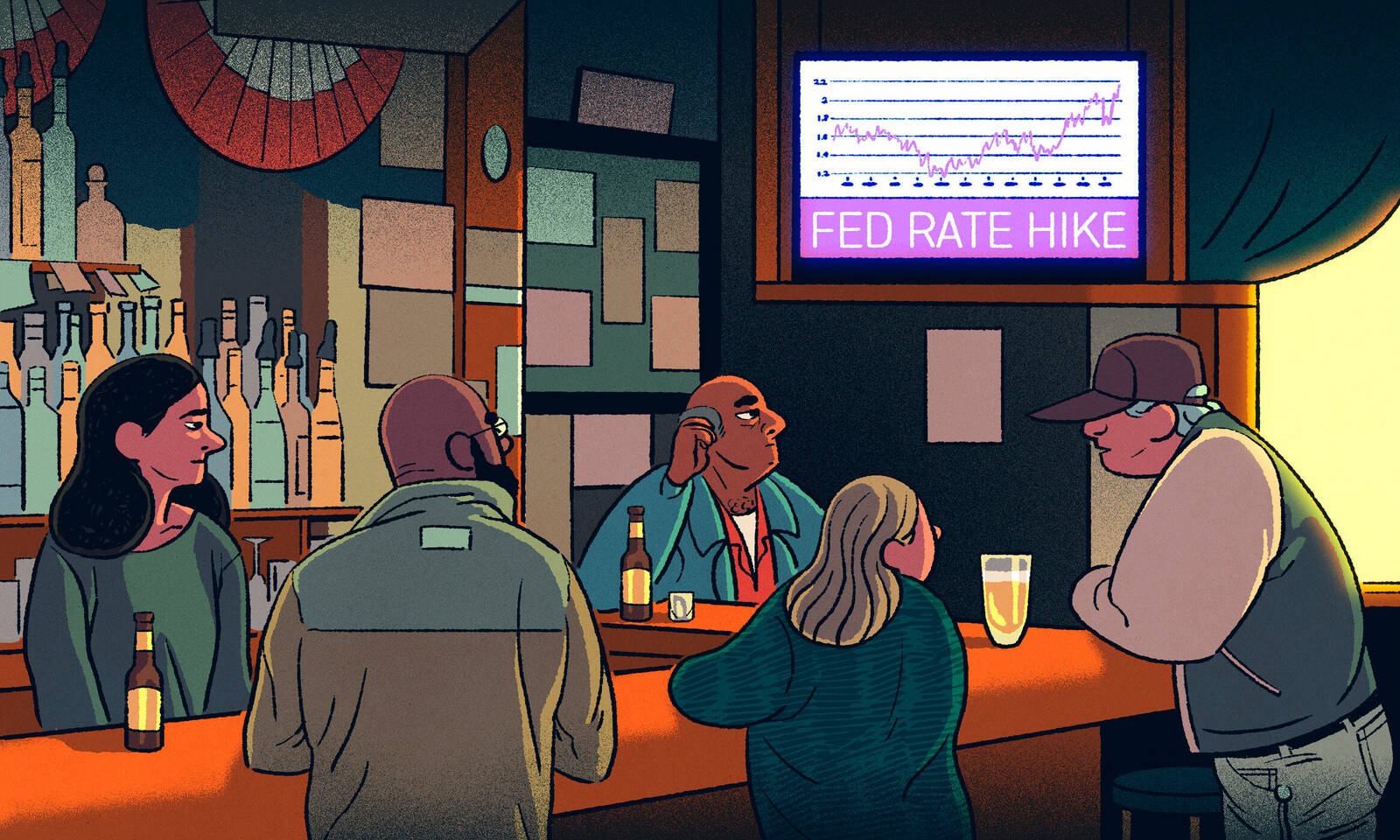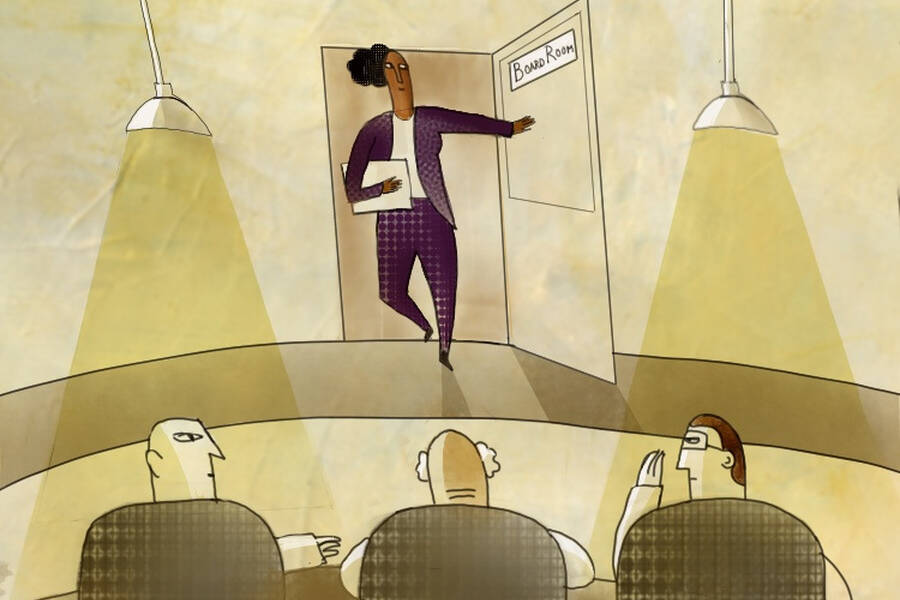
Michael Meier
In 2020, the U.S. Federal Reserve announced that its goal to maximize employment was “broad-based and inclusive.” Essentially, this meant that the agency wanted employment gains to occur across the population, and that they would consider different indicators—such as the unemployment rates of minority, female, and less-educated workers—when deciding whether to continue economy-boosting measures.
But to achieve more inclusive outcomes, policymakers need to better understand how specific demographic groups are affected differently by Fed policies. “The incidence of economic shocks, and economic policy in this case, isn’t borne by all types of workers the same,” says David Matsa, a professor of finance at Kellogg. For instance, policies intended to reduce unemployment might benefit certain groups more than others.
In a recent study, Matsa and his colleagues focused on three groups: workers who are Black, are women, and do not have a high-school diploma. They found that when the Fed lowered a key interest rate to encourage economic growth, those groups saw more job growth in areas with “tight” labor markets—that is, where a relatively high fraction of people already had jobs and companies were struggling to hire workers. They did not find this pattern among white, male, or more-educated workers.
“The tightness of the labor market is very important,” Matsa says. “That’s when stimulating more hiring is going to help these groups.”
The results suggest that when the Federal Reserve enacts policies to boost the economy, it may need to sustain these measures for a longer period. Otherwise, the labor market may not become tight enough for these three groups to benefit. If the agency abandons growth policies too soon, people in those groups might not have had a chance to land jobs yet.
That doesn’t mean that the Federal Reserve shouldn’t raise interest rates when inflation is high, as they just did in March, Matsa says. But “if in other situations they overreact and raise rates prematurely, the burden of that in terms of employment might fall more on some populations than others,” he says.
Tenuous Connections
The Federal Reserve has various financial levers at its disposal to maximize employment and keep prices steady. For instance, if unemployment is high, the agency can lower a benchmark interest rate called the federal-funds rate and buy government securities to increase banks’ cash supply. Those measures, in turn, make it easier for companies to borrow money, expand their operations, and hire workers, and make it easier for households to borrow and spend, too. Conversely, if economic growth is driving inflation up, the agency might reverse tactics and push interest rates higher.
Matsa and his collaborators, Nittai Bergman at Tel Aviv University and Michael Weber
at the University of Chicago, wanted to know how the Fed’s monetary policies affected groups that have lower average levels of employment. This includes women, Black people, and workers without a high-school diploma—groups where a lower percentage of people tend to be employed at any given time, likely for a variety of reasons.
For instance, female and Black job applicants might have been passed over due to sexism and racism. Some women may have left their jobs after having children, either willingly or because of a lack of adequate parental leave or affordable childcare. Black students tend to be punished more harshly than white peers in school for minor misbehaviors; being suspended or expelled can reduce the likelihood
that they will pursue and complete college, limiting their job prospects.
And people with less education—which often correlates with less wealth—might be more vulnerable to setbacks. If a worker’s car breaks down and they don’t have enough money to repair it, they might not be able to get to their job and end up being fired. Or companies may be quicker to lay off less-educated workers in tough economic times. For example, a restaurant might cut their wait staff during a recession and figure they could rehire people later. In contrast, a firm that has invested a lot of training in highly educated employees might hang onto those workers because it would be more costly to retrain a new hire later.
A Local Lens
To find out how these groups responded to the Fed’s policy measures under different labor-market conditions, Matsa and his colleagues gathered employment data from the Census Bureau’s Quarterly Workforce Indicators program for 1990 to 2019. The records covered 895 urban areas across the United States. The researchers also tracked how the federal-funds rate fluctuated over time.
For each urban area, they calculated the tightness of the local labor market, defined as the percentage of people aged 25 to 54 who are employed. The higher the figure, the tighter the labor market, and the more companies had to compete to hire workers. In contrast, if the figure was low, that area had a “slack” labor market and companies had little trouble filling vacant spots.
The researchers wanted to control as much as possible for other factors that could affect employment trends. For instance, employment in a particular industry, such as hospitality or construction, could wax and wane for many reasons besides the Federal Reserve policy.
“You’re not just leading to [women, Black, and less-educated workers] being employed today, but helping them stay in the labor market for potentially years to come.”
— David Matsa
So the researchers made very specific comparisons. They analyzed how employment growth for one demographic group in a particular industry in one urban area compared with employment for the same group in the same industry at the same point in time but in another area where the local labor market was tighter or slacker.
For instance, they might compare employment growth for women in the manufacturing industry from 2015 Q1 to Q2 in the Minneapolis area versus the Cincinnati area. Those analyses allowed the team to tease out how monetary policy affected that group differently depending on labor-market conditions.
Long-Lasting Benefits
The researchers found a consistent pattern across all three demographic groups. In general, lowering interest rates had a bigger benefit for those workers in tight labor markets than those in slack ones.
For example, when the federal-funds rate dropped by one standard deviation, employment growth for Black workers was 0.91 percentage points higher in the tightest labor markets than in the slackest ones. Similar trends emerged for women and people without a high-school diploma.
Among these groups of workers, “in the tighter labor markets, decreasing interest rates leads to more employment growth,” Matsa says.
In contrast, the researchers didn’t see this pattern among white, male, or more-educated workers. When the team tracked how employment growth in these groups changed with lower interest rates, the tightness of the labor market didn’t make much of a difference.
Other analyses suggested that the benefits take time to become apparent. After an interest-rate reduction, the additional employment growth among women, Black, and less-educated workers in tight labor markets peaked roughly two years later. But those gains lasted for a long time; the extra employment boost continued for a few years.
“You’re not just leading to them being employed today, but helping them stay in the labor market for potentially years to come,” Matsa says.
The Cost of Raising Interest Rates
The researchers then created a mathematical model to simulate how firms might react, and how different groups of workers might be affected, in response to different monetary policies.
For instance, the Federal Reserve announced in 2020 that it would move from strict inflation targeting to flexible average inflation targeting. That means that instead of always trying to keep inflation at a specific level, the agency would aim for an average level over time. In other words, if inflation started to rise, they might not take steps as quickly to suppress it.
The team simulated what would happen to workers under both the strict and average targeting policies. The model predicted that the new policy that aimed for an average inflation target would lead to more employment growth for less-advantaged groups, particularly in tight labor markets.
Overall, the study suggests that if the Federal Reserve wants to pursue a more inclusive employment goal, the agency may need to sustain low interest rates longer during times of economic growth. In the past, the agency typically raised interest rates preemptively once inflation started to rise towards its target level, in order to avoid high inflation. But taking these steps too early could mean that many women, Black people, and those without high-school diplomas never get a chance to be hired.
And even those who do find work might suffer from the “last in, first out” phenomenon: recently hired employees are more likely to be cut later if layoffs are necessary. When the government discourages lending and investment, companies might let go of workers from those vulnerable groups.
“The cost of raising interest rates preventatively is primarily borne by a subset of the population,” Matsa says.
Roberta Kwok is a freelance science writer in Kirkland, Washington.
Bergman, Nittai K., David Matsa, and Michael Weber. “Inclusive Monetary Policy: How Tight Labor Markets Facilitate Broad-Based Employment Growth.” Working Paper.



